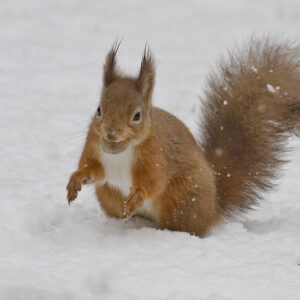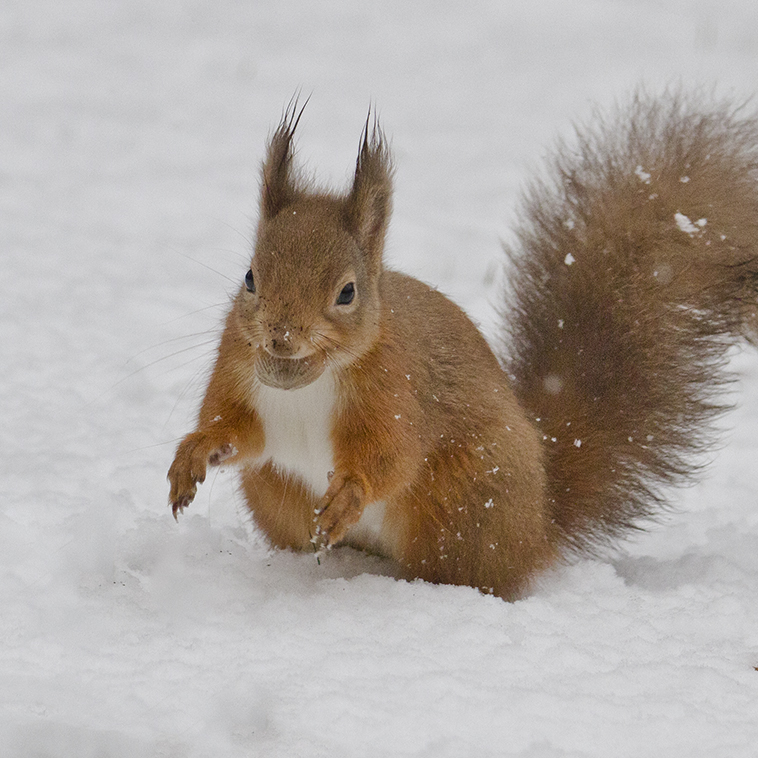Original Author: Stewart Smith – Squirrel Volunteer
As we prepare our special flexible-waisted ‘January trousers’ ahead of the Christmas eating onslaught, our favourite redhead has other ideas.
Your average adult red squirrel weighs in at a svelte 330 grams. It enjoys regular exercise – scampering and climbing being favourite pursuits. Its slim physique is maintained by seeking out different foods, ensuring it keeps to a balanced diet.
A red squirrel has a more varied diet than people may realise. It has an instinct for knowing which nutrients are required by its body, and nuts only get you so far in nutritional terms. In winter, red squirrels will eat seeds, fruit, fungi and even show a carnivorous side come Spring, eating eggs and small birds, if the opportunity presents itself. The extra protein helps bring the females into breeding condition. Variety ensures a good range of protein, vitamins, minerals and carbohydrates in the red squirrel diet plan, provided that there is a decent habitat and not too much competition from other animals.

Naturally, the main competition for red squirrels comes from the animal with the most similar diet: the invading grey squirrel. Before grey squirrels were introduced to Britain in the 19th Century, reds were able to live very successfully in almost any type of forest. Nowadays, however, they have had to adapt to become more specialist in their choice of habitat and diet. Grey squirrels, which are larger, have a hard time gaining enough sustenance from the food provided by conifer forests – pine nuts and seeds are shorter on nutritional value than the food provided by large seeded broadleaved trees, e.g. acorns. The smaller body size of reds, however, allows them to survive and thrive in coniferous forests, with a reduced threat of invasion by greys. A good mix of different coniferous trees is essential, however, to provide a sufficiently varied diet. Many commercial plantations planted in the 1960s, ‘70s and ‘80s only contain one tree species (typically Sitka Spruce), which limits the range of food for red squirrels and other animals. After all, a plate full of Brussel sprouts doesn’t make a Christmas dinner.

